At the Scottish Crannog Centre on Loch Tay, visitors can immerse themselves in Scotland’s Iron Age. A museum and the village show life in the past.
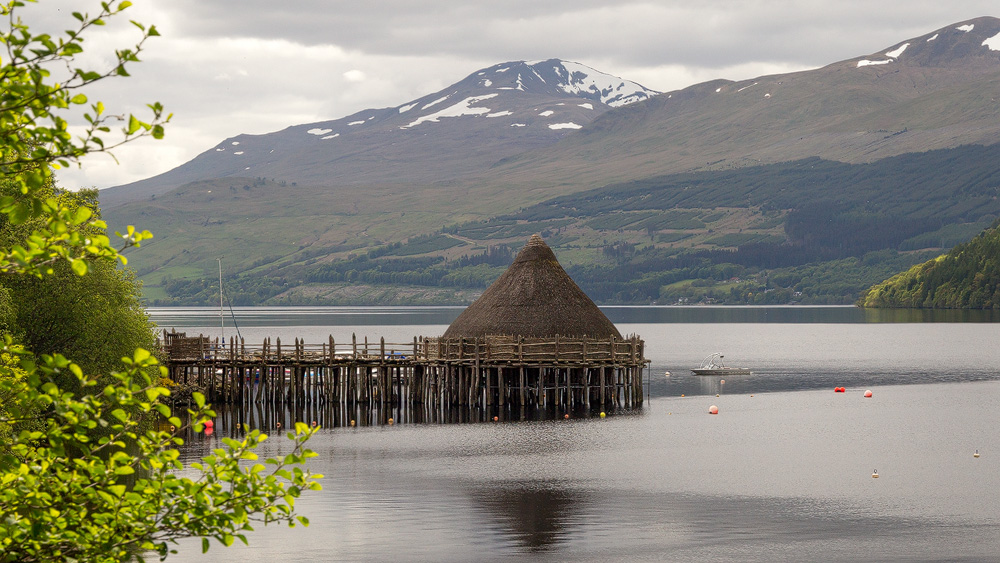
The fire came at night. On 11 June 2021, flames put an end to years of work by archaeologists and volunteers. The crannog – a house on stilts in the lake – was just a pile of damp ashes. But with the help of donations and a lot of hard work, a new crannog is now being built. And much more.
Almost three years after the fire, the Scottish Crannog Centre opened in a new location: even bigger, even more beautiful, with an even better concept. Almost like a phoenix rising from the ashes.
An entire Iron Age village has sprung up on the banks of Loch Tay. Craftsmen have set up shop in the round wooden houses: blacksmiths, spinners and weavers or simply bakers.
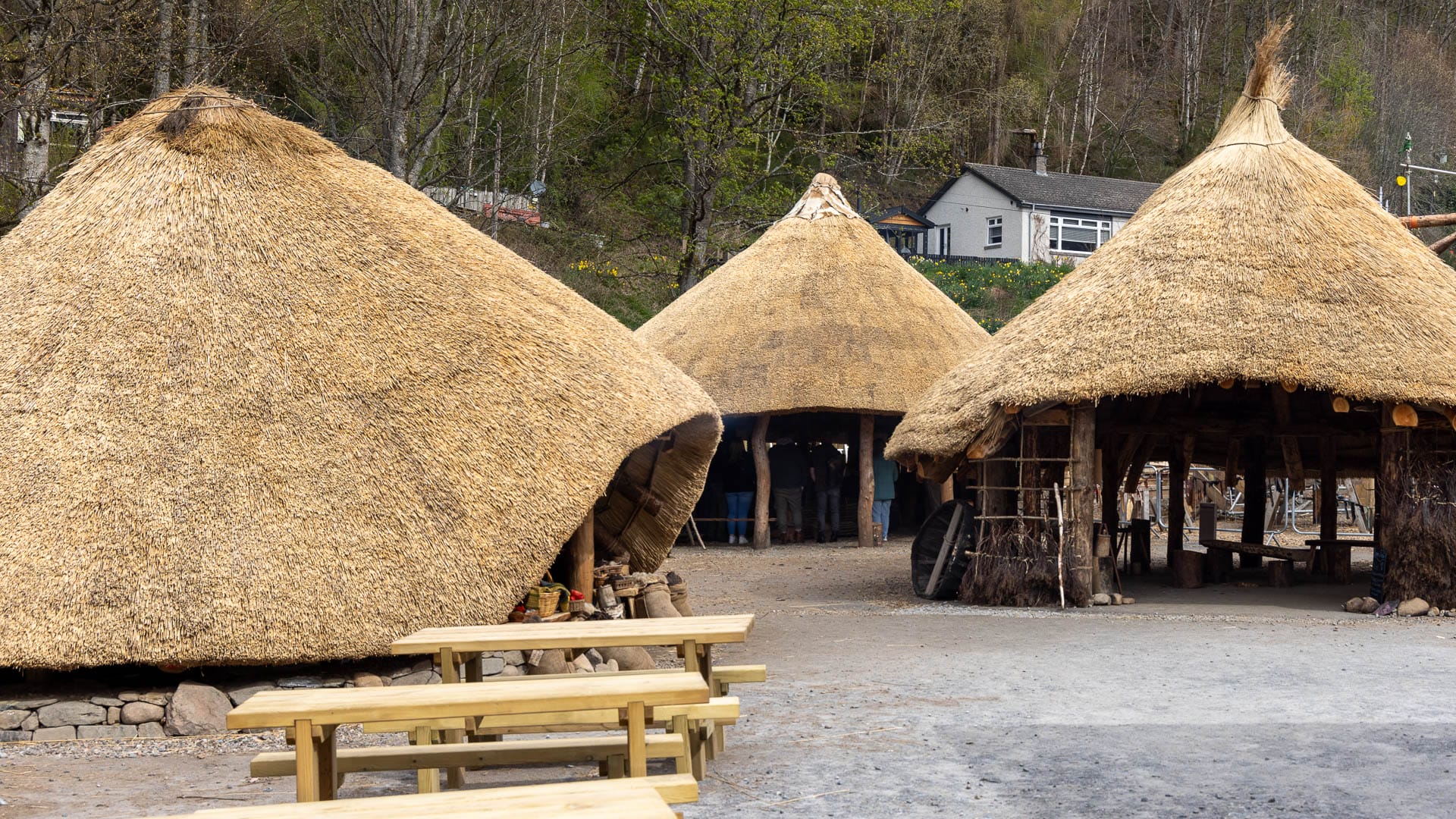
However, the way into the village leads through the museum. This is where the artefacts that archaeologists have painstakingly unearthed in Loch Tay can be found.
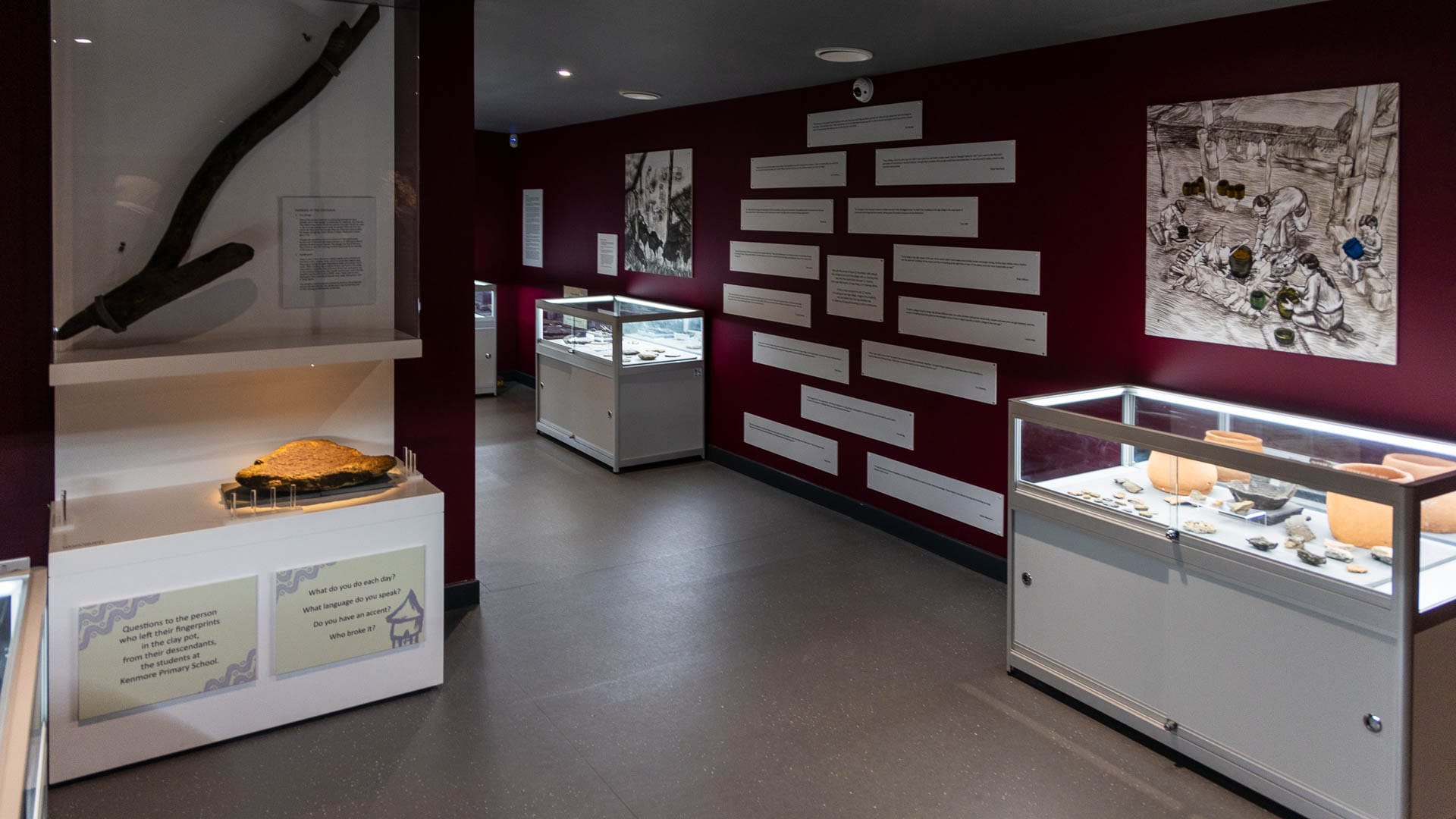
Ploughs, the remains of hazelnuts, pottery and much more can be seen here. However, some treasures lie in the cupboard and are only brought out for a few visitors. For example, ancient scraps of clothing woven in what is known as 1/2 twill. A method that is astonishingly fine and sheds new light on the weavers of the time.
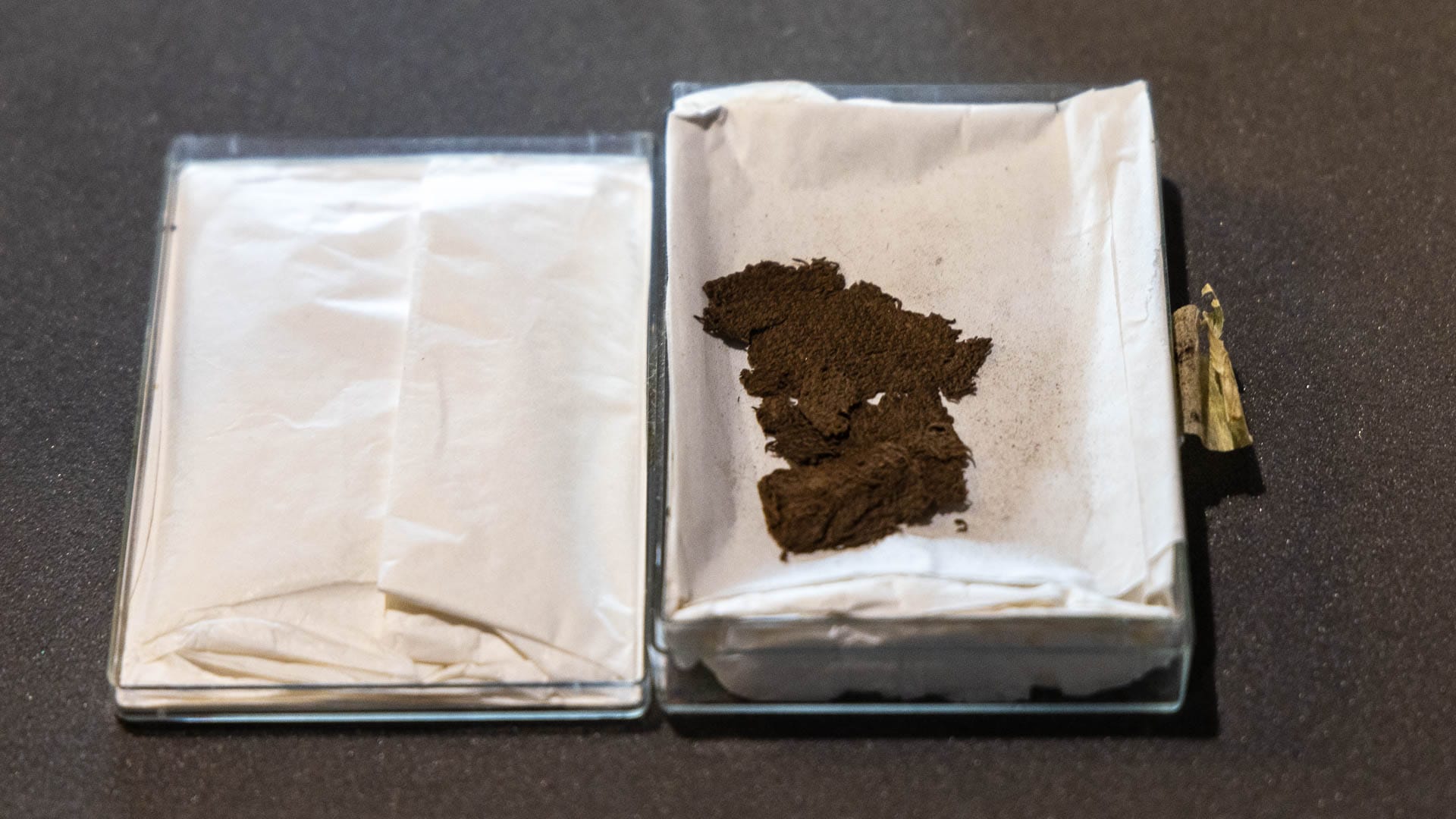
As nice as it is to see the exhibits in the museum, it is even nicer to experience the world of yesteryear in the village of the Scottish Crannog Centre.
In one of the wooden houses, a resident bakes bread and prepares other dishes. Visitors can even try some here. A savoury taste from the past.
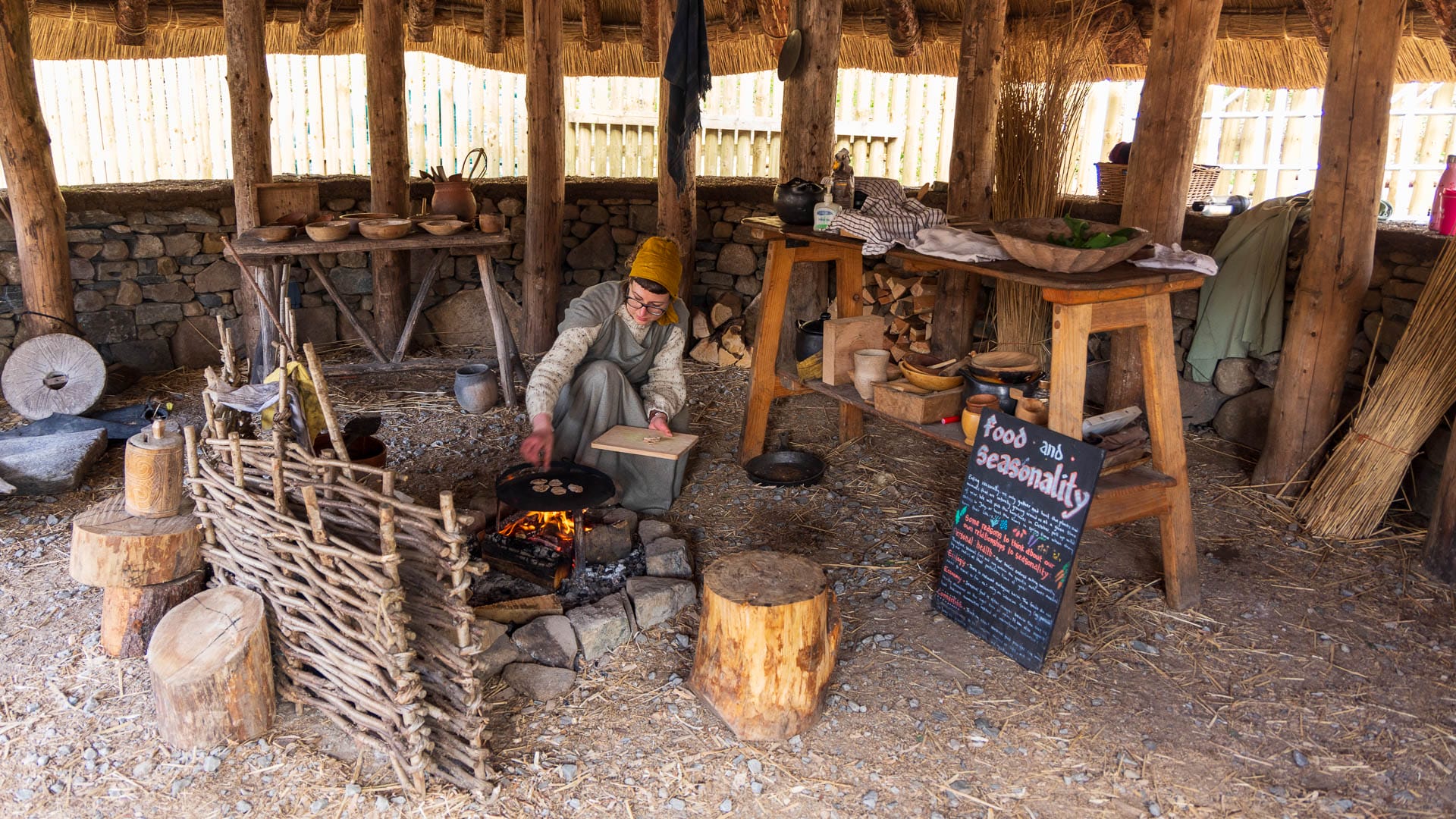
The woman is happy to provide information and demonstrate her art. Right next door, visitors can hear the puffing of the bellows and the hammering on the anvil. Blacksmith Tom Timbrell patiently works a lump of iron to produce nails, blades and other tools.
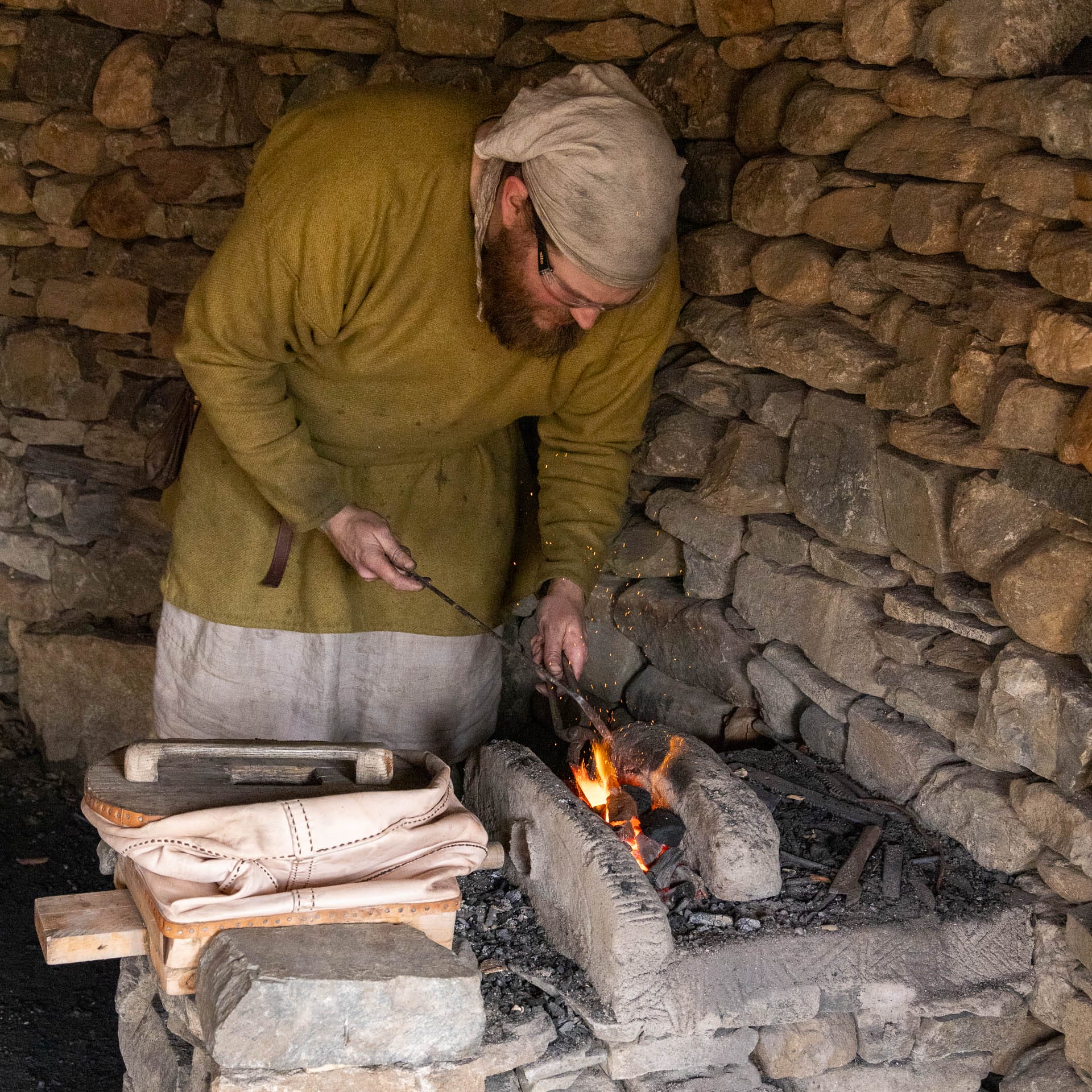
This shows how experimental archaeology works. What cannot be explained by finds is tried out or, in some cases, learnt from modern peoples who still use similar techniques. The bellows on the forge, for example, is modelled on a technique used in Africa.
The third house disproves the idea that the people of the Iron Age all wore monotonous and muted colours. The Iron Age was colourful. And the spinners and weavers show this confidently here.
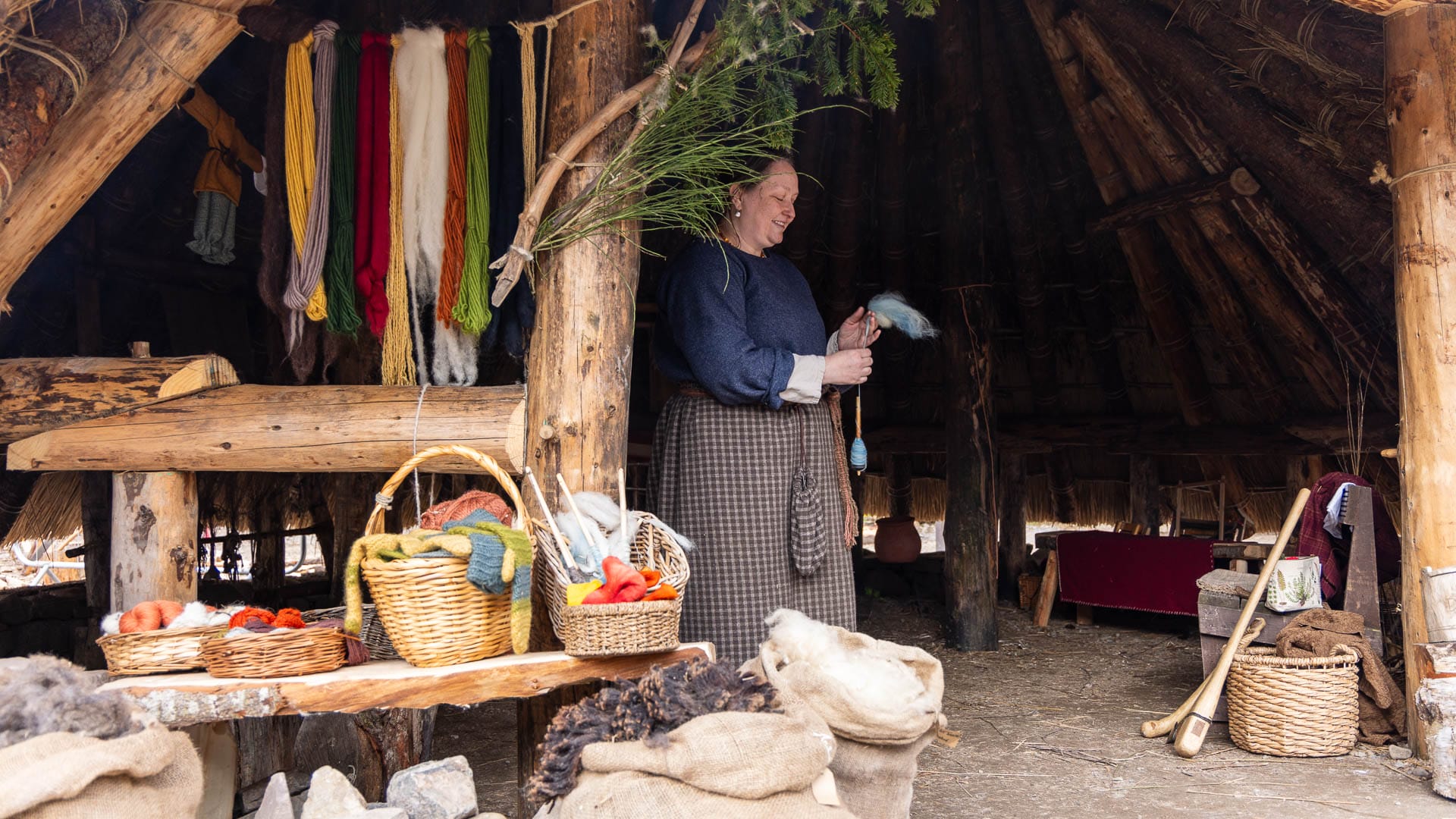
Colourful threads hang over the wooden planks and balls of wool are piled up in baskets. Pure new wool lies ready in sacks as raw material. Everything you can touch, everything is real.
There is still a lot to discover in the village. There are currachs here and there, small rowing boats covered with animal skin. Bundles of thatch lean against the sides of the houses, craftsmen hammer away at the historic buildings.
In contrast, the café on the grounds is a very modern place to dine. Coffee and cake or small hot meals.
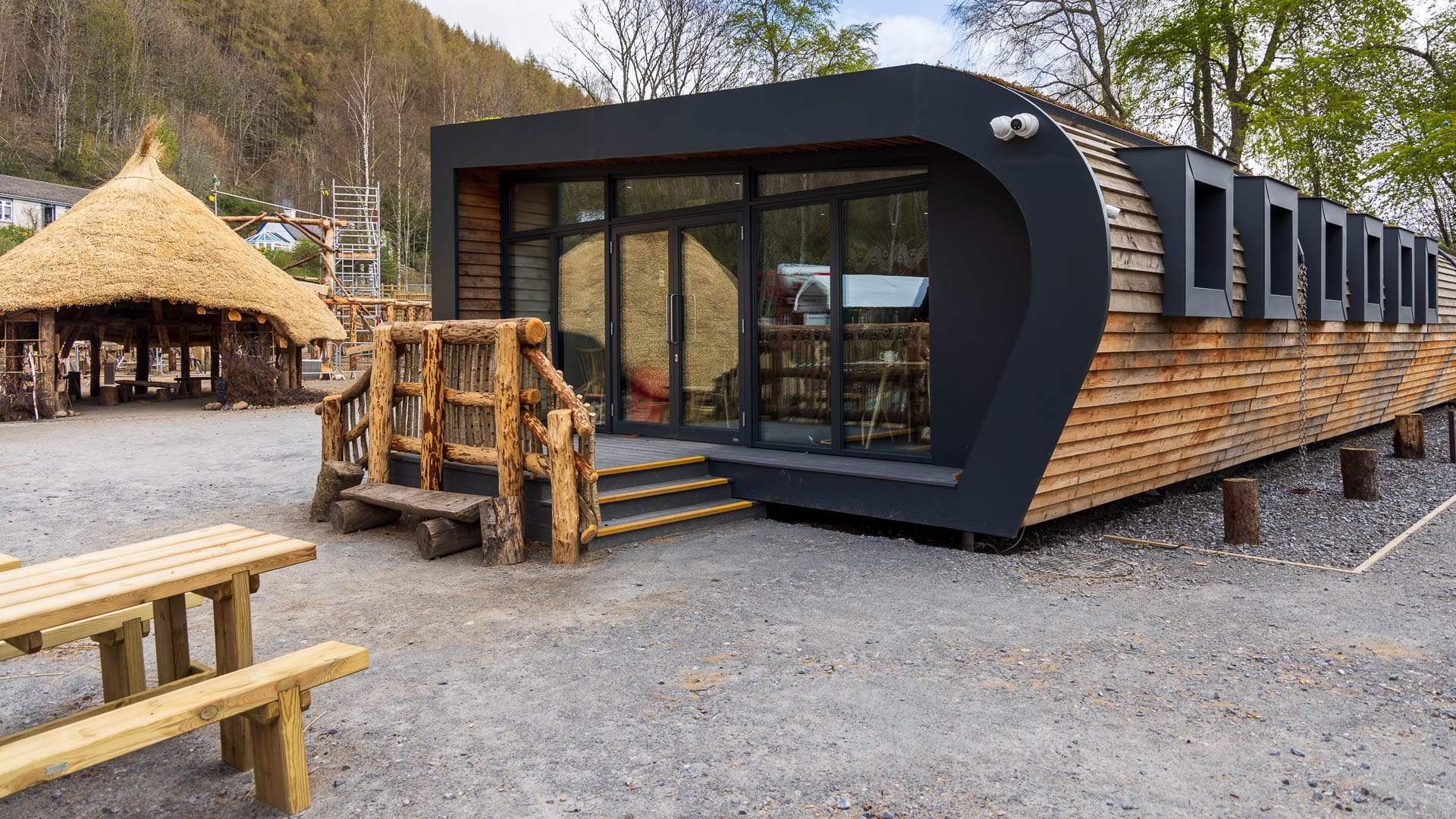
But where is the Crannog itself? The wooden house on the water that gives the centre its name? The answer: Not there yet. It is currently under construction. On the one hand, it is to be built by many helpers from within the village. On the other hand, the authorities have to give their blessing. But the project is due to start in summer 2024.
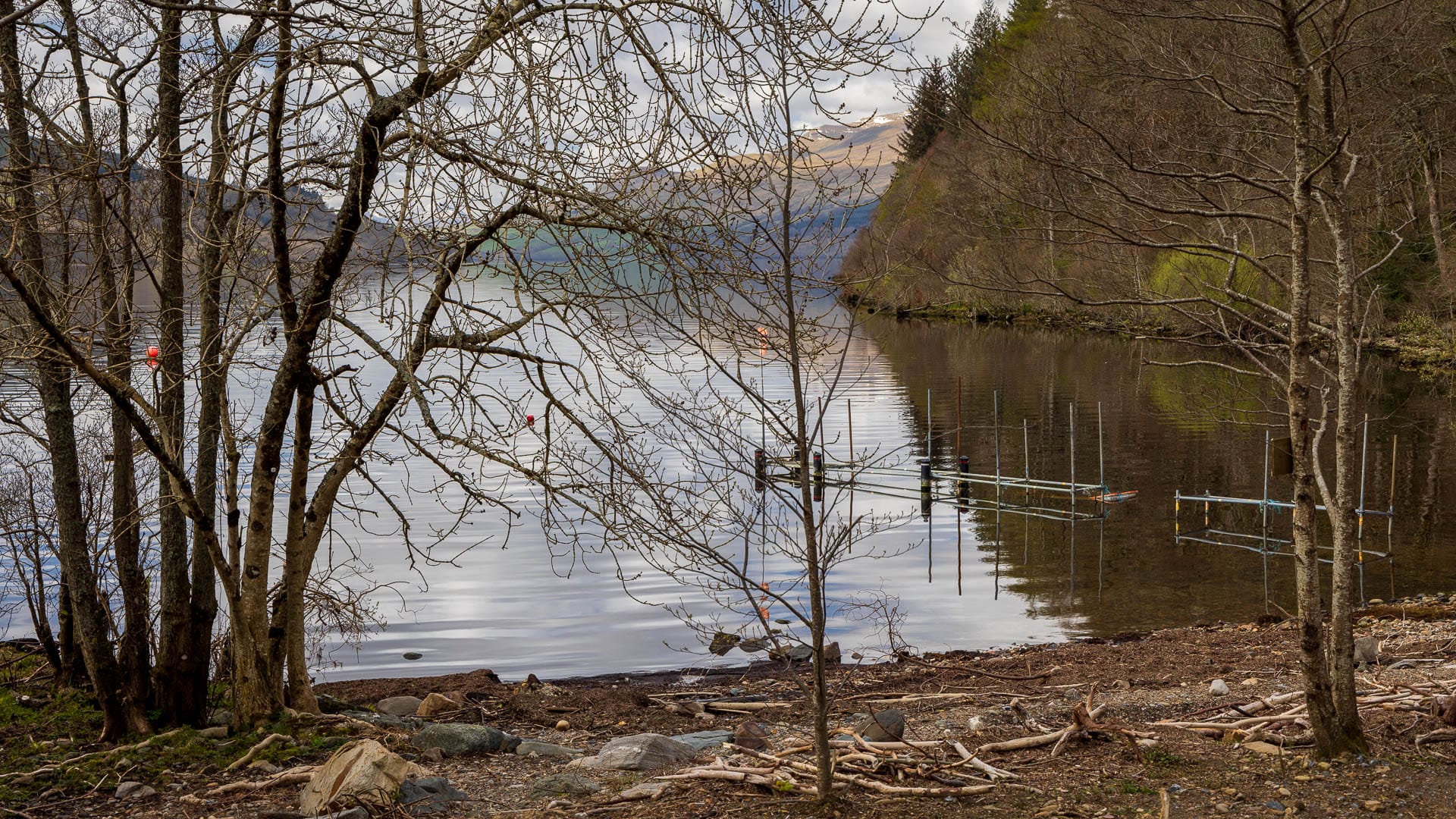
You can only guess what the crannog will look like from the old building, which has burnt down. Presumably, a long walkway will once again lead to an entrance into a large, round wooden building.
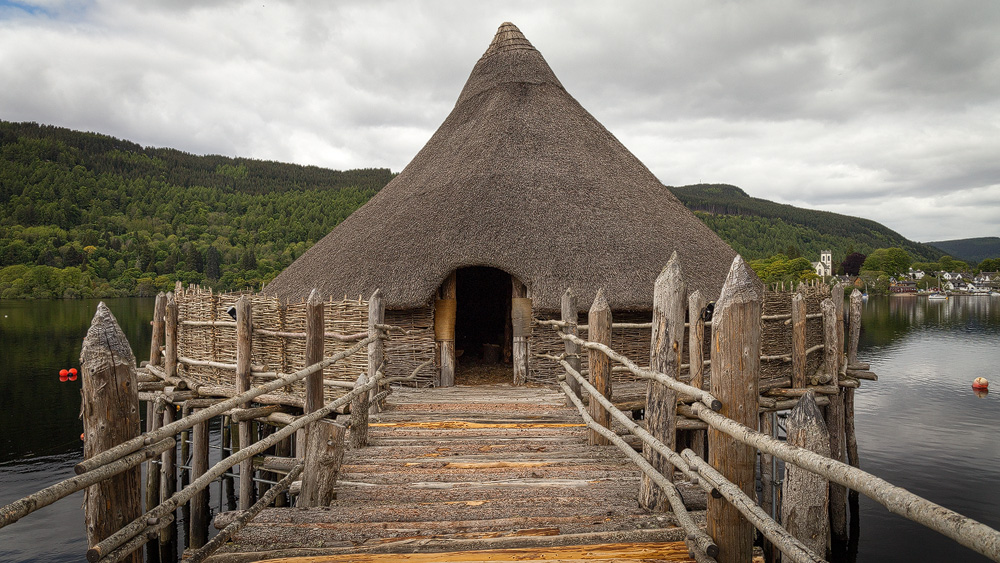
This is what it looked like inside:
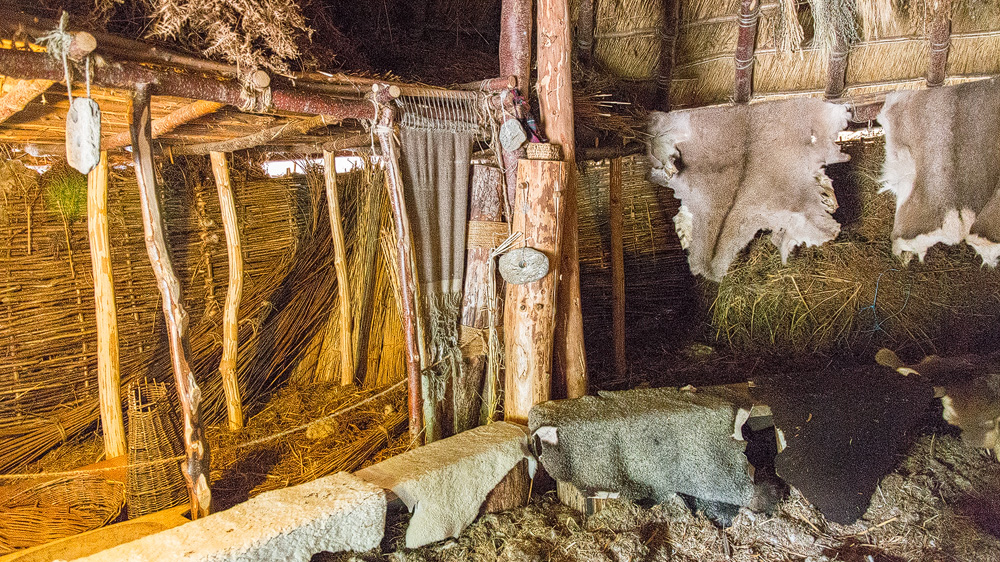
The visit to the new Scottish Crannog Centre is even better than the old one. The concept of joining in and having a say is a complete success. And so today’s time flies by in the village of Iron Age. But in the end, it only takes one step through the gate into the car park to suddenly find yourself in the present.
Knowledge: Loch Tays crannogs and underwater archaeology
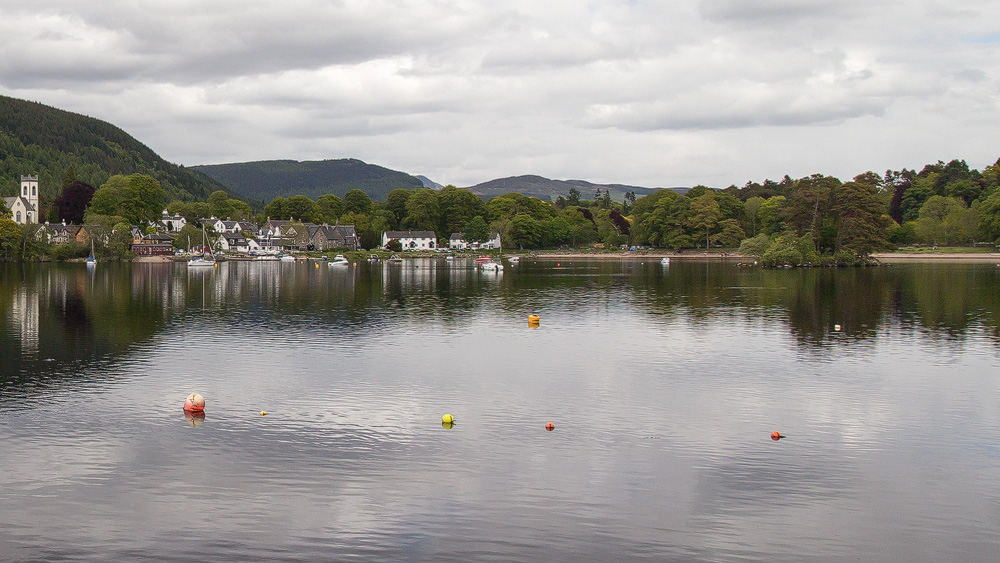
Crannogs are roundhouses built on stilts in the middle of the water and Scotland used to have many of them. There are currently 430 sites where such houses once stood. Incidentally, these pile dwellings were also once common here – for example on Lake Constance.
18 crannogs have been discovered in Loch Tay alone. Five of them can still be seen with the naked eye today – as small islands covered in trees. One of them, for example, is not far away in the bay near Kenmore. Depending on the water level of the loch, other small crannog islands also reappear. The height difference of the loch can vary by two and a half metres.
To investigate all these crannog remains, archaeologists have been diving in Loch Tay since 1980, unearthing tools, jewellery, building materials and even the remains of longboats. The ancient crannog reconstruction is mainly based on the findings of the Oakbank crannog near Fearnan.
Tip: Fancy an adventure? Then take the road through Glen Quiach
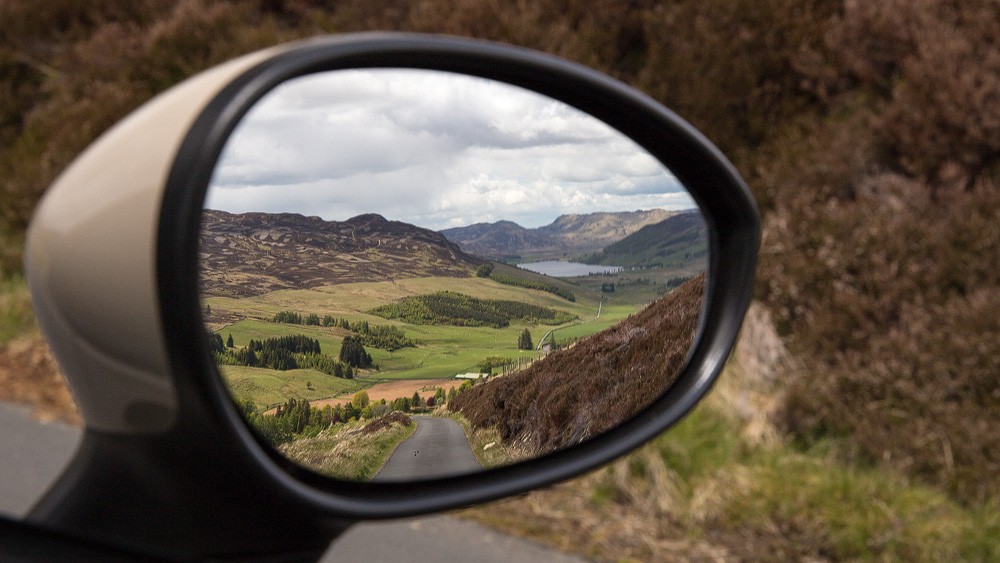
Coming from Sterling, visitors can drive to Kenmore via Aberfeldy on larger and safer roads. However, there is an alternative, scenic route via a small single track road over the mountains. The tour takes you through Glen Quaich and then over to Kenmore. The descent ends almost at Kenmore Marina. However, it is very winding and narrow.
Nevertheless, the route is a tip, whether travelling there or back. It is beautiful, albeit strenuous.
Directions and accessibility
With a sat nav: Simply enter “PH15 2NX” and the sat nav will take you to Kenmore. The rest is signposted.
Without sat nav: From Perth, take the A9 towards Inverness and Pitlochry, but leave the road at Ballinluig and Aberfeldy. Continue on the A827 until just before Kenmore. Follow the signs to the Crannog Centre. Coming from Callander, take the A85 until you see the turn-off to Killin and the Falls of Dochart. This is the A827 again, which you then follow to Killin and then to Kenmore.
You can park directly at the Scottish Crannog Centre, where there is a large car park.
Accessibility: Most of the site is at ground level, with ramps to the museum, café, shop and toilets suitable for wheelchairs and wheelchair users. Visitors with visual impairments can take part in a spoken tour. There is also a hands-on collection and outdoor activities.